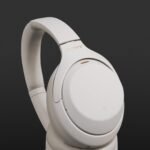Sennheiser Headphones VS Sony, When it comes to high-quality audio equipment, few brands can rival Sennheiser and Sony. These two audio giants are well-known for producing some of the best headphones on the market, offering a wide range of features, sound quality, and comfort. However, when comparing Sennheiser headphones vs Sony, it can be challenging to determine which brand is truly superior, as each has its strengths and unique offerings. In this article, we’ll break down the key differences between Sennheiser and Sony headphones in 2024 to help you make an informed decision.
Sound Quality: A Battle of Clarity and Depth
Sennheiser and Sony have earned their reputation by providing exceptional sound quality, but they approach it differently.
- Sennheiser is often praised for its natural and balanced sound signature, delivering clear highs, rich mids, and a controlled low end. This makes them a popular choice for audiophiles and those who prioritize precise, accurate sound. Whether you’re mixing music, gaming, or simply enjoying your favorite tracks, Sennheiser headphones often provide a more neutral listening experience.
- Sony, on the other hand, tends to offer a more enhanced and bass-heavy sound profile. Their headphones, especially in the WH-1000XM5 and WF-1000XM5 series, feature deep bass and excellent clarity in the mid-range and treble, providing a more dynamic and immersive listening experience. This makes them a great choice for those who love punchy bass or listen to genres like EDM, hip-hop, and pop.
In this category, Sennheiser might be the preferred choice for audiophiles who value accuracy, while Sony appeals to consumers who enjoy a more exciting and lively sound.
Noise Cancellation: The Industry Standard
When it comes to active noise cancellation (ANC), both brands offer stellar performance, but Sony has traditionally been ahead of the curve.
- Sony headphones, like the WH-1000XM5, are widely regarded as having the best noise-canceling capabilities on the market. Their ANC technology is highly effective in blocking out ambient noise, whether it’s the hum of an airplane or the chatter of a crowded cafe. Additionally, Sony’s integration of adaptive sound control, which adjusts the noise cancellation depending on your activity, gives them a significant edge in this area.
- Sennheiser, while competitive, is generally considered a step behind Sony in terms of noise-canceling performance. Their Momentum 4 Wireless headphones offer good noise isolation, but they don’t quite match the precision and customization of Sony’s offerings. However, Sennheiser still provides an impressive ANC experience for most casual listeners.
For those who need the best in noise cancellation, Sony is the clear winner.
Comfort and Build Quality
Comfort is a key consideration when purchasing headphones, especially for long listening sessions. Both Sennheiser and Sony excel in this regard, though they have slightly different design philosophies.
- Sennheiser is known for its ergonomic design and premium materials. Their headphones are built for comfort, with plush ear pads and adjustable headbands that ensure a snug yet comfortable fit. The materials used are typically lightweight yet durable, offering a luxurious feel.
- Sony, too, provides excellent comfort with soft, plush ear cups that are ideal for extended wear. Their headphones tend to be slightly more adjustable, making them a good fit for users with larger heads. The build quality is solid, with the WH-1000XM5 being especially praised for its lightweight design and comfortable fit.
Both brands offer headphones that are comfortable for extended use, though Sennheiser might appeal to those seeking a more premium, luxury feel, while Sony offers comfort with a focus on a lighter, more adjustable fit.
Battery Life: Who Lasts Longer?
Battery life is a crucial factor for wireless headphones, and both brands offer impressive performance, but there are some distinctions:
- Sony headphones, like the WH-1000XM5, boast up to 30 hours of playback time with ANC enabled. In addition, they offer quick charging, with 10 minutes of charging providing up to 5 hours of listening time.
- Sennheiser headphones, such as the Momentum 4 Wireless, also deliver outstanding battery life, lasting up to 60 hours on a single charge—significantly longer than Sony’s options. The quick charge feature on Sennheiser headphones is equally impressive, providing several hours of playback with just a short charge.
If battery life is your top priority, Sennheiser has the edge with its extended usage times.
Additional Features and Price
Both brands offer additional features, but the specifics vary.
- Sony includes extra features like customizable sound modes, touch controls, and a companion app for personalizing your listening experience. The integration of voice assistants like Google Assistant and Alexa makes them more versatile for everyday use. However, all these features come at a premium price, with Sony’s high-end models costing more than Sennheiser’s comparable offerings.
- Sennheiser also provides smart features, including customizable sound settings, but their headphones tend to be simpler in terms of extra functions. That said, they’re often more affordable than Sony’s premium models, offering great value for the price.
Conclusion: Sennheiser vs Sony – Which is Better?
Choosing between Sennheiser headphones vs Sony ultimately comes down to personal preference and priorities.
- If you value natural, accurate sound and long battery life, and are willing to sacrifice a bit in terms of noise cancellation, Sennheiser might be the better choice for you.
- If you want the best noise cancellation, a more bass-heavy sound signature, and a feature-packed, user-friendly experience, Sony is likely the better option.
In 2024, both brands are at the top of their game, but your ideal headphones will depend on your specific needs, whether it’s for work, travel, or personal listening enjoyment.
You Might Also Like These:












No Comment! Be the first one.